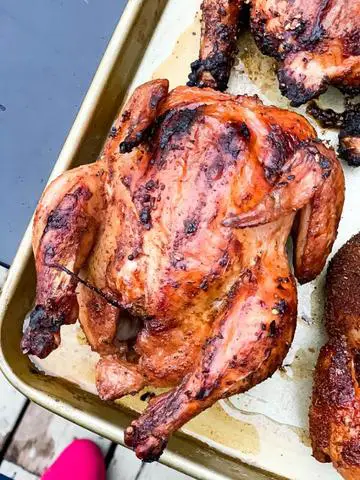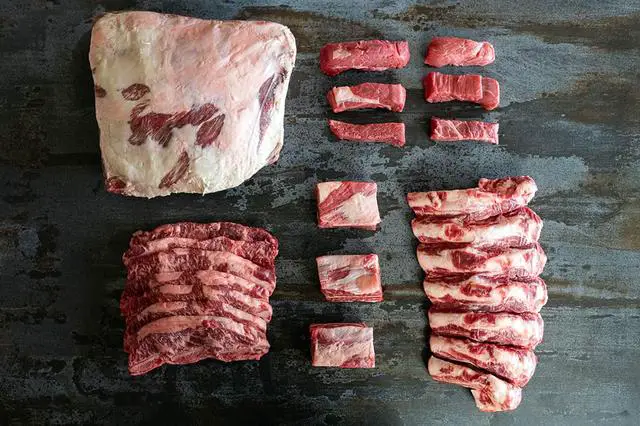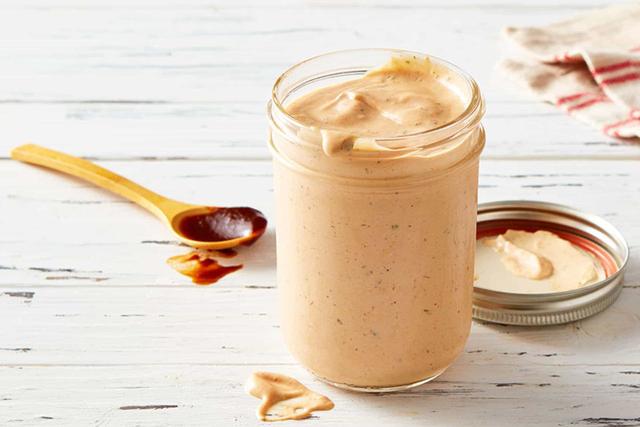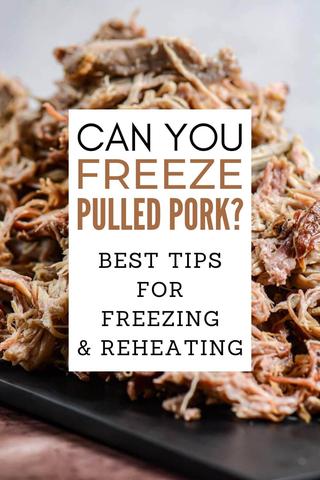
“Master the Art of Freezing Pulled Pork: Preserve Flavors & Convenience in Every Bite!”
Can You Freeze Pulled Pork? 2 Easy Methods

Pulled pork is a versatile meat that can be easily frozen and reheated without compromising its quality. There are two main methods that you can use to freeze pulled pork: using Ziploc bags or vacuum sealing.
If you choose to freeze pulled pork using Ziploc bags, it is a cost-effective option. Simply size the bag according to the amount of pulled pork you have and seal one end to create a bag. Fill the bag with pulled pork, remove as much oxygen as possible by rolling the bag, and place it in the freezer. However, it is important to note that freezing with Ziploc bags is not suitable for long-term storage.
On the other hand, if you prefer long-term storage for your pulled pork, using a vacuum sealer machine with vacuum sealer bags is recommended. This method greatly extends the shelf life of the meat. After sizing and sealing one end of the bag, fill it with pulled pork and place the open end inside the vacuum chamber of your sealer. Once sealed, you can store the vacuum-sealed pulled pork in your freezer for up to 9-12 months.
Freezing Pulled Pork
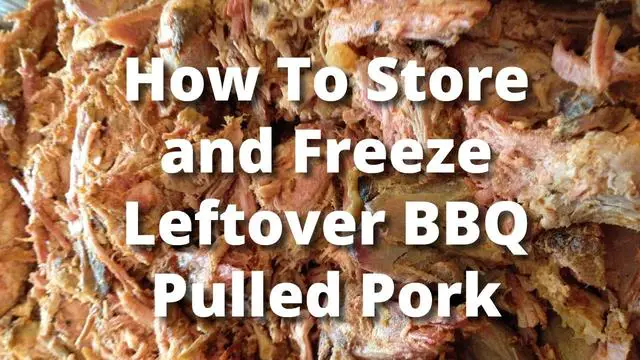
Pulled pork is a versatile meat that can be easily frozen for later use. There are two main methods to freeze pulled pork: using Ziploc bags or vacuum sealing.
If you choose to use Ziploc bags, simply size the bag according to the amount of pulled pork you have and seal one end to create a bag. Place the pulled pork inside the bag, remove as much air as possible, and seal the open end. This method is convenient and cost-effective, but it is not suitable for long-term storage.
For long-term storage, vacuum sealing is recommended. Using a vacuum sealer machine and vacuum sealer bags, seal one end of the bag and then fill it with pulled pork. Place the open end inside the vacuum chamber, close and lock the top, and let the machine remove all air from the bag. This method greatly extends the shelf life of pulled pork.
To minimize freezer burn, it is important to cool down the pulled pork before freezing by placing it in the fridge until its temperature drops below 40F. This reduces condensation in the bags. When packaging the cooled pulled pork in bags, roll them tightly to push out as much oxygen as possible.
It is also advisable to freeze pulled pork without sauce if possible since some sauces may separate or “break” upon freezing. However, most barbecue sauces can be frozen without issues.
If using Ziploc storage bags, frozen pulled pork will last for 2-3 months before succumbing to freezer burn. On the other hand, if using vacuum sealer bags, pulled pork can be frozen for 9-12 months without quality degradation.
These time frames are based on personal experiences and are also supported by recommendations from Ziploc/ScJohnson and Inkbird. It is important to note that different brands of freezer bags may have their own recommended storage times, so it is best to consult the manufacturer for specific information.
How to Freeze Pulled Pork with a Vacuum Sealer
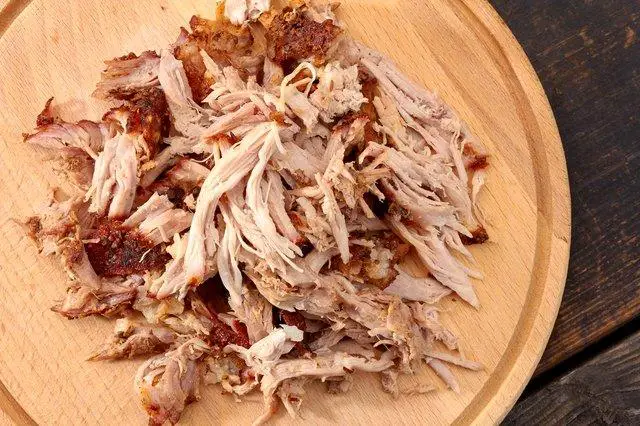
Freezing pulled pork with a vacuum sealer is a great option for long-term storage. Here’s how you can do it:
1. Size your bag: Start by selecting the appropriate size vacuum sealer bag for the amount of pulled pork you have.
2. Seal one end: Place the bag across the sealing strip on the vacuum sealer machine and close the lid. Press the “seal” button to seal one end of the bag, creating a pouch.
3. Size your bag: Flip the bag over to the roll side and use the slicer on top of the sealer to size your bag according to your needs.
4. Fill with pulled pork: Once you have sized your bag, fill it with pulled pork, leaving some space at the top for sealing.
5. Vacuum seal: Place the open end of the bag inside the vacuum chamber of the sealer. Close and lock the top of the sealer. Let it run until all air is extracted from inside the bag.
6. Complete sealing: Unlock and open the top of the sealer once it’s done. Your pulled pork is now vacuum-sealed and ready for freezing.
7. Freeze: Place your sealed bags of pulled pork in your freezer for long-term storage.
Vacuum-sealed pulled pork can typically be frozen for 9-12 months without succumbing to freezer burn or quality loss.
How to Vacuum Seal Pulled Pork
Vacuum sealing pulled pork is a great way to extend its shelf life and prevent freezer burn. Here are the steps to vacuum seal your pulled pork:
1. Start by sizing your bag for the amount of pulled pork you have. Seal one end of the bag to create a pouch.
2. Place the sealed end of the bag across the sealing strip of your vacuum sealer machine. Close and lock the lid.
3. Press the “seal” button on your vacuum sealer machine to create a sealed compartment in the bag.
4. Flip the bag over and use the slicer on top of the sealer to size your bag according to your desired portion size.
5. Fill the bag with pulled pork, leaving some space at the top for proper sealing.
6. Place the open end of the bag inside the vacuum chamber of your sealer machine and close and lock it.
7. Activate the vacuum sealing process by pressing appropriate buttons on your machine’s control panel.
8. Once done, unlock and open the top of your vacuum sealer machine, remove the sealed pulled pork bag, and place it in your freezer for long-term storage.
Note: Vacuum-sealed pulled pork can be frozen for 9-12 months without succumbing to freezer burn.
Freezing Pulled Pork with Ziploc Freezer Bags
Freezing pulled pork with Ziploc freezer bags is a simple and cost-effective method. Start by sizing your bag to fit the amount of pulled pork you have. Seal one end of the bag to create a pouch. Lay the bag across the sealing strip of a vacuum sealer machine, making sure not to put it inside the vacuum chamber. Close and lock the lid, then press “seal” to seal one side of the bag. Flip the bag over to the roll side and use the slicer on top of the sealer to size your bag.
Now that you have a sealed bag, fill it with pulled pork and remove as much air as possible by placing it inside the vacuum chamber. Close and lock the top of the vacuum sealer, allowing it to remove all air from the bag. Once done, unlock the top and place the pulled pork in your freezer. This method ensures that your pulled pork stays fresh for up to 2-3 months without succumbing to freezer burn.
How to Freeze Pulled Pork with Freezer Bags
Freezing pulled pork with freezer bags is a simple and cost-effective method. Start by sizing your bag according to the amount of pulled pork you have. Seal one end of the bag to create a pouch. Lay the bag across the sealing strip of a vacuum sealer machine, ensuring it is not inside the vacuum chamber. Close and lock the lid, then press “seal” to seal one end of the bag.
Flip the bag over to the roll side and use the slicer on top of the sealer to size your bag. You now have a sealed bag ready to be filled with pulled pork. Fill the bag with pulled pork and remove as much air as possible before sealing it. Place the open end of the bag inside the vacuum chamber, close and lock the top, and activate the vacuum sealer. Once done, unlock the top and place the vacuum-sealed pulled pork in your freezer.
If you prefer not to use a vacuum sealer, you can also freeze pulled pork using Ziploc bags. Portion out your pulled pork based on when you plan to use it and place it in individual Ziploc bags. Before freezing, cool down the pulled pork in the refrigerator so that its temperature is below 40°F. This helps minimize condensation in the bags. Roll each bag tightly to push out as much oxygen as possible, reducing freezer burn. Finally, place the filled Ziploc bags in your freezer for storage.
Freezing Pulled Pork with Sauce?
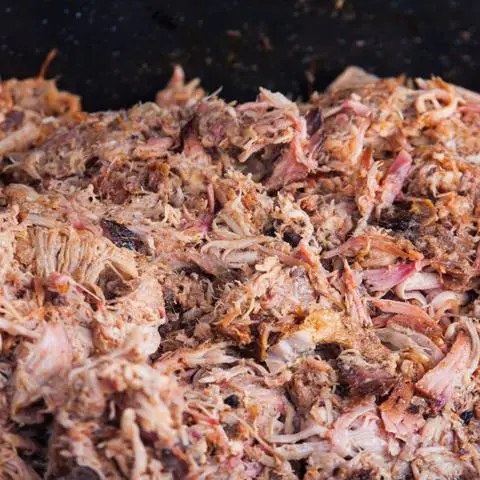
When it comes to freezing pulled pork with sauce, it’s important to consider the type of sauce you’re using. Most barbecue sauces can freeze well, as they typically contain sugars, vinegar, tomato ketchup, mustard, and other ingredients that are freezer-friendly. However, sauces that feature fats or mayonnaise, like Alabama white sauce, may not freeze well and can separate or “break” upon freezing.
If you’re unsure about whether your sauce will freeze well, it’s best to check the ingredients or do a small test by freezing a portion of the sauce in an ice cube tray and observing the results. Additionally, freezing pulled pork with sauce can cause the meat to ball up and make it harder to separate small amounts later on.
To avoid these issues, it is recommended to freeze pulled pork without the sauce if possible. This will help maintain the quality of the meat and make reheating easier. However, if you prefer to freeze pulled pork with sauce, be aware that it may affect the texture and taste of the meat.
How Long is Frozen Pulled Pork Good For?
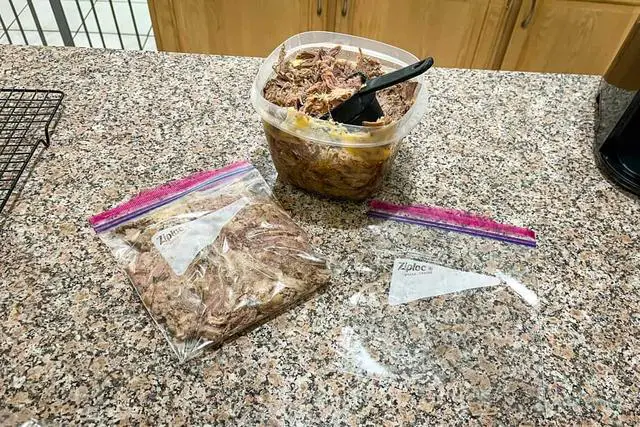
Frozen pulled pork can be stored for different lengths of time depending on how it is packaged. If using Ziploc bags, the meat will last for 2-3 months before succumbing to freezer burn. However, if vacuum sealed using a vacuum sealer machine with vacuum sealer bags, the pulled pork can be frozen for 9-12 months. These time frames are consistent with the recommendations provided by Ziploc/ScJohnson and Inkbird.
It’s important to note that freezer burn can negatively impact both the appearance and taste of the meat. To minimize freezer burn, it is recommended to push out as much oxygen from the bags as possible and to cool the pulled pork in the fridge before freezing. Freezing without sauce is also suggested, as some sauces may separate or “break” upon freezing.
In conclusion, if you plan to consume the pulled pork within 2-3 months, using Ziploc bags should suffice. However, for long-term storage of up to a year, investing in a vacuum sealer machine and vacuum sealer bags would be ideal.
In conclusion, freezing pulled pork is a convenient way to extend its shelf life and ensure it remains delicious for future use. By properly packaging and labeling the portions, you can easily thaw and enjoy this versatile dish whenever you desire, saving time and minimizing food waste.
Learn More About Grilling
If you want to learn more about grilling, check out these other helpful resources!

